The Christian Cross: List of All the Different Models
The cross is one of the oldest and most widely used Christian symbols.
In fact, the Christian cross, made up of bars intersecting at right angles, is an ancient symbol that dates back well before this religion. However, it is by being associated with it that the cross finds its deepest meaning.
In its broadest sense, the Christian cross symbolizes, represents and commemorates a founding event of Christianity: the crucifixion of Jesus Christ.
You should also know that there are different crosses, all of which have a particular meaning. Some are associated with very specific branches of Christianity, others are more related to very specific geographical areas.
In short, we will present to you the different models of Christian crosses that may have existed, across cultures and time.
Contents :

The Catholic cross

1st model of Catholic cross: the Latin cross
Often known as a crucifix, the Latin cross represents the crucifixion of Christ.
Historically, it seems that this model of Catholic cross is derived from the dagger, a symbol of pagan origin.
In many countries around the world (mainly in Asia), the Latin cross is seen as an object of animist worship dating from the pre-Christian era.
Before Christianity made it the Christian lucky symbol we know today, it could have symbolized things like the four cardinal points, the link between the horizontality of our watch and the verticality of the spiritual world, the fertility, etc.
It was therefore indeed during the crucifixion of Jesus of Nazareth that the Latin cross took on a new meaning to become the symbol of the love and altruism of Christ, as well as of his devotion to men.
Worship of the Christian cross therefore not only spread across Europe, but also dramatically affected Africa and the Americas.
During the 15th century, it became increasingly difficult for many enslaved Africans to retain their cultures and beliefs as they entered the New World.
Faced with the terrible ordeals they had to endure, many of them turned to religion.
For many, the Latin cross therefore became a symbol of hope and a brighter tomorrow.
If this is your case too, you should find something to guide you in this type of cross.

2nd model of Catholic cross: the patriarchal cross
The patriarchal cross is a kind of Catholic cross with the particularity of having an additional crossbar.
There are several theories that attempt to explain the meaning of this element.
One of the most popular explanations is that the top beam, which is also found on various crosses which we will discuss in a moment, represents the plate that was nailed above Jesus when he was crucified.
There was then the inscription: “Jesus of Nazareth, King of the Jews”.
But there are also other theories as to the meaning of this Catholic cross, among which the following occupy a good place.
The first beam could represent the death of Jesus, and the second his resurrection.
The patriarchal cross could also have been created to mark a development in the power of the princes of the time. Thus, an additional bar would be a sign of increased power of the Church.

3rd model of Catholic cross: the papal cross
The papal cross is representative of the ultimate authority of the Roman Catholic Church.
This emblem of the ecclesiastical hierarchy is specifically associated with the Pope, ruler of the Church on earth.
This model of Catholic cross consists of a vertical bar cut by three horizontals, placed in descending order of length.
Since it is the official symbol of the papacy, the use of the papal cross by any other church and organization has been strictly prohibited.
The papal cross is distinct from the archiepiscopal cross, which is only composed of two horizontal bars, a bit like the patriarchal cross and which is used to designate an archbishop.
In Catholic symbolism, the three bars of the papal cross are generally considered representative of the Trinity – the Father God, the son Jesus and the Holy Spirit.
They can also symbolize the areas which fall under the authority of the Pope, namely the Church, heaven and the earthly world.

4th model of Catholic cross: the Celtic cross
According to popular legend, the Celtic cross was introduced by St Patrick when he converted the pagans of Ireland to Christianity.
It has been said that St Patrick is said to have combined the classical Latin cross with the circular symbol of the pagan sun to give newly converted followers the idea of the importance of the Christian cross by relating it to the symbolism of the life-giving properties of the sun.
Others say instead that placing the Catholic cross at the top of the circle represents the supremacy of Christ over the sun god, who was worshiped by pagans.
According to some sources, the circles around the intersection of the Catholic cross represent the unification, totality, and inclusion of religion in our lives.
However, it is clear that much of the oral history and wisdom of the ancient Celtic ways has been lost.
Therefore, our understanding of the symbolism of the Celtic cross today is largely based on writings by Christian monks who put certain elements of popular mythology to paper.
Nowadays, it is not uncommon to come across representations of this Christian lucky symbol. This is partly due to what we call the " Celtic Revival ", a 19th century cultural movement that promoted the use of ancient symbols such as the Celtic cross.

5th model of Catholic cross: the Greek cross
The Greek cross is also known as the crux immissa quadrata.
It is characterized by four arms of equal length and barely longer than they are wide.
In reality, this model of Catholic cross was mainly used in early Christianity.
In ancient times, the Greek cross was used as a symbol, not only of a religious nature but with a deep artistic meaning.
It was used in the creation of clothing, ornaments, architecture, jewelry... and a whole bunch of other fields.
We do not know exactly what the origin of this type of Catholic cross is…
Some speak of the Egyptians.
Others allude to the Pythagoreans, the followers of the famous mathematician Pythagoras of Samos. They indeed used a relatively similar lucky cross called Tetractys.

The Orthodox cross

1st model of Orthodox cross: the Russian cross
The Russian Orthodox cross is a special type of Christian cross.
It has three crosspieces, two horizontal and a third oblique.
For example, you can find an example of a Russian cross with three crosspieces here.
The upper bar, the one that is not always present, is a reminder of the sign that hung above Christ's head.
The middle bar represents where Christ's hands were nailed.
The bottom bar is the footrest.
This last line of the Russian Orthodox cross reminds us of the story of the two thieves who were crucified alongside Jesus.
Before dying, the one on the right decided to repent, while the one on the left persisted in his stupidity.
Thus, the lower bar of the Russian Orthodox cross is, as it were, a ladder of justice, the tips of which show the way to hell and heaven.

2nd model of Orthodox cross: the Byzantine cross
Of all Orthodox crosses, the Byzantine cross is the most richly decorated.
Halfway between a crucifix and a Russian Orthodox cross, it has the characteristics of both (that is to say a figure of Christ, and the presence of three bars including an oblique one).
This form of cross was very fashionable in Byzantium, which is why it is called the Byzantine cross. Moreover, the modern Greek flag often displays one.
Despite the fact that this type of Christian cross is no longer encountered very frequently in Modern Orthodox traditions, it has significant symbolic weight throughout the world.
In the Middle Ages, it was already widely used as an emblem on banners and armor in particular.
We can still find absolutely monumental models of this Christian lucky symbol in some churches.
The Byzantine Orthodox cross is then made there from the most precious materials, and set with jewels of incredible beauty: a true lucky cross.

3rd model of Orthodox cross: the cross of Saint Nicholas
Saint Nicholas is one of the most popular saints, especially among Orthodox Christians.
As a liturgical icon, he is known for showing unwavering charity and concern for the well-being of children.
As a historical figure, Saint Nicholas served as bishop of Myra, a city in present-day Turkey, from 280 to 342 AD.
The Saint Nicholas cross corresponds to a relatively classic Orthodox cross model, except that it is marked with the acronyms “IX”, “XC”, and “NIKA”.
The first two are both abbreviations of the word "Christ", while the last means "Victory", meaning the victory of Christ on earth.
We are therefore talking here about one of the emblems in the heaviest sense of all those present in the Orthodox branch of Christianity.
You will undoubtedly be able to learn more by analyzing the cross of Saint Nicholas present on this necklace.

The Protestant cross

1st model of Protestant cross: the Huguenot cross
The Huguenot cross would have been a sign of recognition among French Protestants of the 16th century, then called Huguenots.
It was inspired by the insignia of the Order of the Holy Spirit worn by Henry IV of Navarre, because it was he who promulgated the Edict of Nantes in 1598 to protect the freedom of worship of Protestants.
Consequently, this type of Protestant cross became a symbol worn by Huguenots (and other Protestants) around the world as a sign of their fervent faith and in thanks to the one who once tried to protect them.
There are furthermore different variations in the design of the Huguenot cross.
The most common version consists of a set of four triangles connected at one of their vertices, with the space between them filled with fleur-de-lis and a dove below.
The arms of this Protestant cross each represent one of the Gospels.
The “V” that the triangles form as they move away from the center is to be compared with the victory of Jesus Christ.
The eight dots around the edge of this Christian lucky symbol represent the eight beatitudes.
With their three petals, lily flowers symbolize the Holy Trinity. There are therefore twelve leaves in total which represent the twelve apostles.
The spaces formed by the triangles and the fleurs-de-lys make heart shapes appear on the Huguenot cross. These remind us of God's loyalty and love, and the commandment to “love one another.”
Finally, the dove is the representative of the Holy Spirit, who guides and advises the Church.
This type of Protestant cross is therefore loaded with strong symbolism. .. unlike the second which we will see immediately.

2nd model of Protestant cross: the simple cross
There is a pretty clear distinction between Catholics and Protestants in the different crosses they may or may not use.
Protestants, for example, cannot use a crucifix, that is to say a Christian cross bearing an image of Jesus.
They will therefore clearly prefer a simple Protestant cross, why not wooden like this one, rather than a gold crucifix on which there would be a meticulous sculpture of Christ.
Throughout the Old Testament, the Israelites were distinguished from other nations by the fact that they had no idols to represent God. The Protestant cross seeks to respect this heritage.
God gave the reason for this command in the book of Isaiah, where he indicates that he is jealous of his own glory and will not share it with an idol: "I am the Lord, that is my name, I will not give my glory to no one else, nor my praise to carved idols”
Thus, Protestant churches are most often only decorated with a simple cross and which is not the object of any worship, but simply the symbol of a memory.
This way of understanding the Christian cross is specific to this branch of Christianity.
Indeed, Protestants are undoubtedly the only ones who can remain indifferent to any Christian lucky symbol.
All the lucky crosses in the world will therefore not please them.

The Eastern Cross

1st model of an oriental cross: the Jerusalem cross
The Jerusalem Cross consists of a large central cross with four smaller representations of the Greek cross in each quadrant.
Its use dates back to the 11th and 12th centuries, when the Crusaders captured Jerusalem and reestablished Christianity in the region.
One of the leaders of the Crusades, Godfrey of Bouillon, decided to make the Jerusalem Cross the symbol of the new Crusader state, known as the Latin Kingdom of Jerusalem.
From a symbolic point of view, this type of Christian cross can represent several things.
According to some, the four quadrants are associated with the four evangelists, or even with the four corners of the earth, in which Jesus wanted his words to be carried by his disciples.
The central symbol would then represent Christ himself.
Some theologians and specialists think that all the Greek crosses present here should be compared with the five wounds that Jesus suffered on the cross.
The four small lucky crosses would then represent the four wounds of Jesus' hands and feet, while the large one would be associated with his side pierced by the spear.
Regardless, the Jerusalem cross is a popular choice among those looking for a unique way to express their faith.
This Christian lucky charm also allows us to remember our connection to the Holy Land which saw the birth and death of Christ.
If this kind of thing seems important to you, why not take a closer look at this Christian lucky charm, the Jerusalem cross.

2nd model of oriental cross: the Coptic cross
The Coptic Church is the main Christian church in Egypt, established by the Apostle Mark in the 1st century (ca. 60 AD).
It has numerous dioceses all over the world, particularly in Africa and the Middle East.
This type of oriental cross is distinguished from the others by a circle which surrounds the top of the symbol. In this sense, it has many points in common with a symbol of ancient Egypt: the Ankh cross.
In reality, the Coptic cross has evolved throughout the history of this Church.
Initially, it was, like all Christian crosses of primitive types, to resemble the Greek cross which we spoke about recently.
It was only later, under the influence of local populations, that this type of Christian cross took the form we know today.
However, you should know that many Churches today criticize this symbol, believing that it is too close to an ancient paganism that Christianity is supposed to combat.

3rd model of oriental cross: the Ethiopian cross
During the colonization of the continent, European missionaries brought Christianity almost everywhere in Africa.
This was not the case for Ethiopia.
Indeed, this kingdom was probably the second country (after Armenia) to embrace the Christian faith, when Saint Francis of Tire converted King Ezana in the 4th century.
There is evidence that Christianity began to flourish in the country as early as the 1st century.
Today, most Ethiopians follow their own form of Orthodox Christianity.
As this branch of Christianity developed alongside the European world, it is not surprising that the Ethiopian cross has a distinct appearance.
You can check it for yourself by looking at this pendant with an Ethiopian cross, typical of local craftsmanship.
This type of Christian cross is almost always made of elaborate lattice work.
Some models designed to be held in the hand feature a handle that represents the Ark of the Covenant.
The geometric patterns that constitute the Ethiopian cross are common in the art of that country.
Very often, they also respect a particular order which corresponds to a very precise symbolism. The complex interlacing can, for example, represent eternal life in the afterlife.
The different crosses from the Ethiopian tradition therefore also carry meaning.

Religious military orders

1st cross of a religious military order: the Maltese cross
The Maltese cross is a Christian lucky symbol in the form of a star formed of four "V" shapes with their points joined together.
This type of Christian cross is perfectly symmetrical both vertically and horizontally, giving it an overall similar shape to the Greek cross.
The colors used to represent it are often black and white, or red and white.
The Maltese Cross has its roots in the Crusades, and was originally the symbol of the Amalfi Republic (an Italian state) in the 11th century.
It was adopted by the Knights Hospitaller of the order of Saint John in 1126.
As they settled in Malta from 1530 to 1789, this model of Christian cross naturally took the name of the island.
For many, the eight dots around the edge of this Christian lucky charm can symbolize several different concepts.
In the Middle Ages, they were associated with the eight obligations of the Knights of the Order of Malta :
- Live in the truth
- Have faith
- Repent of your sins
- Show humility
- Love justice
- Be merciful
- Be sincere and without reservation
- Knowing how to endure persecution
The Maltese Cross also represents the eight medieval nations whose nobles could be members of the Order of Saint John, namely:
- Auvergne
- Provence
- France
- Aragon
- Castile and Portugal
- Italy
- Bavaria (a kingdom of Germany)
- England (with Scotland and Ireland)
One thing is certain: wearing this type of Maltese cross badge is not reserved for everyone...

2nd cross of a religious military order: the Templar cross
Three years after the fall of Edessa at the hands of the Seljuk Turks in the Holy Land, the Templars, then already well established in Europe, responded to the Pope's call to don their white coats with a red cross.
Seeing the Templar cross fluttering in the wind was absolutely terrifying to any enemy standing before them.
Based on a Greek-type Christian cross, this emblem has long fueled a debate: were the Templars in agreement with the Christian vision of the time?
Does the symbol really represent the crucifixion of Christ or is it instead an older pagan symbol?
One thing is certain: the Templars were the protectors of Christians in the Holy Land.
Their heroic exploits are still told today, and this type of Templar amulet representing their cross is still a symbol of courage and defense of Christianity.

3rd cross of a religious military order: the Teutonic cross
Made up of four "Ts", this type of Christian cross was attributed to the Knights of the Teutonic Order, a religious military order founded by Emperor Henry VI in 1191.
In 1198, they officially acquired the title Crusaders, fighting first in the Holy Land and then in Prussia and Lithuania.
The members of the Teutonic order gained a reputation as fierce fighters always ready to defend the meaning of the Catholic cross.
However, the knights did not spend all their time killing people: they also protected Christian pilgrims who came to visit the city of Acre.
It is also for this service rendered to Christians that the order received the right to wear a white habit marked with a black cross: the Teutonic cross.
Despite extraordinary military exploits, their influence began to decline from the 15th century, until the order was dismantled by Napoleon in 1809.

4th symbol of a religious military order: the cross of Saint James
The cross of Saint James has ornate arms and a pointed base making it resemble a dagger.
Historically, this is explained by the use made of it by pilgrims: the point could easily be buried in the ground to form a Christian cross.
Thus, all that remained for the diligent believer was to kneel in front of it in order to be able to pray.
However, some consider the cross of Saint James to be a spear, or even a sword blade.
This Christian lucky symbol also serves as the emblem of the Order of Santiago, a military order of knights which was created in the year 1171 to protect pilgrims who visited the city of Santiago de Compostela.
Here you can see what a crest of the legendary Order of Santiago looks like.
They also built and managed inns and hospices along the entire length of the Camino de Santiago.
For over a thousand years, people have followed this route to discover more about God, and sometimes about themselves too.
Everyone was then able to admire the different Christian crosses which decorate the path.
In short, the Order of Santiago spread and became famous throughout Europe.
At the height of their glory, the knights controlled 2 towns, 178 villages and nearly 200 parishes.
They also operated hospitals, convents and a college in Salamanca on the northern plateau of Spain.

5th symbol of a religious military order: the Calatrava cross
The military order of Calatrava was founded by Don Sancho III, king of Castile in 1157.
Quickly, a very particular type of Christian cross emerged from this order: the Calatrava cross.
Although its origin is debated, some attribute it rather to the order of Alcantara and others to that of Montesa, most experts agree that it was with the knights of Calatrava that it reached its peak.
The stylized shape of this lucky cross can evoke several things.
Theologians believe they can discern heart shapes which would then represent the Sacred Heart.
Others see instead four human figures, each having a head and two arms.
There are even some who consider it to be the design of a flower with its petals.
Whatever the case, it is clear that of all the Christian crosses that we have seen, this one is undoubtedly the one that remains the most mysterious, even today.
The Christian cross, an ideal subject of jewelry!
Then Jesus said to his disciples, If any man will come after me, let him deny himself, and take up his cross, and follow me. - Matthew 16:24
Sacred heart, ichthus, anchor or dove... There is no shortage of Christian lucky symbols and are increasingly popular today.
In the midst of all this, however, there is one that stands out very clearly from the others. You must suspect it given the theme of the article, it is about the cross.
Necklaces, bracelets, earrings, pendants or medallions : there is no shortage of ways to wear!
Synonymous with love, hope, strength, forgiveness and renewal, the cross carries a decidedly deep meaning which necessarily marks the life of every Christian.
In fact, there are probably as many reasons to wear cross-shaped jewelry as there are believers on Earth.
Some wear it as a bracelet to remember the sacrifice of Jesus Christ, who died crucified for our sins. It is true that the cross bears this weight.
Others will use cross necklaces as a reminder to include times of prayer in their day. Rosaries, for example, fulfill this function wonderfully.
There are also some who will choose to wear more modern jewelry, to please and attract the attention of their loved ones and, who knows, thus start a conversation on a religious theme.
Many Christians also choose to wear crosses as a simple sign of belonging, to show that they too belong to the Church.
In short, there is no shortage of reasons to wear jewelry paying homage to the cross.
And you, which one will be yours?

Conclusion on all the different crosses
In reality, there are few objects of piety as important as the Christian cross.
It reminds us to put Jesus Christ at the heart of our practice of religion.
Catholic, Orthodox, Protestant… it doesn’t matter!
This Christian lucky symbol reveals to us the character of God: his love for lost sinners and his perfect justice are indeed met there.
Increasing our understanding of the Christian cross can be a good way to grow our piety. This will indeed allow us to confront one of the greatest and insidious sins: pride.
The different crosses are the place where all the wounds of sin are healed, where all faults are forgiven.
If you're struggling with emotional issues (guilt, anxiety, depression, anger, or anything else), chances are you can find help there.
If you are going through tragedy or suffering, there is comfort to be found there too.
Keeping the Christian cross at the center of our life can protect us from many deceptions and manipulations.
The devil hates this symbol because it seals his fate and his inevitable defeat.
Always keep one of the lucky crosses that you can find here close to your heart, remember the message they carry, and everything should be fine for you.
Lucky charms featured in this article
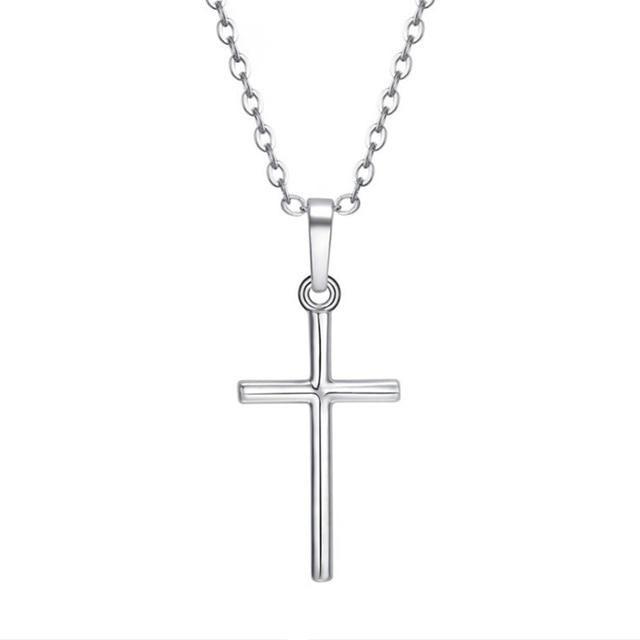
Pendant Made of a Latin Cross
See more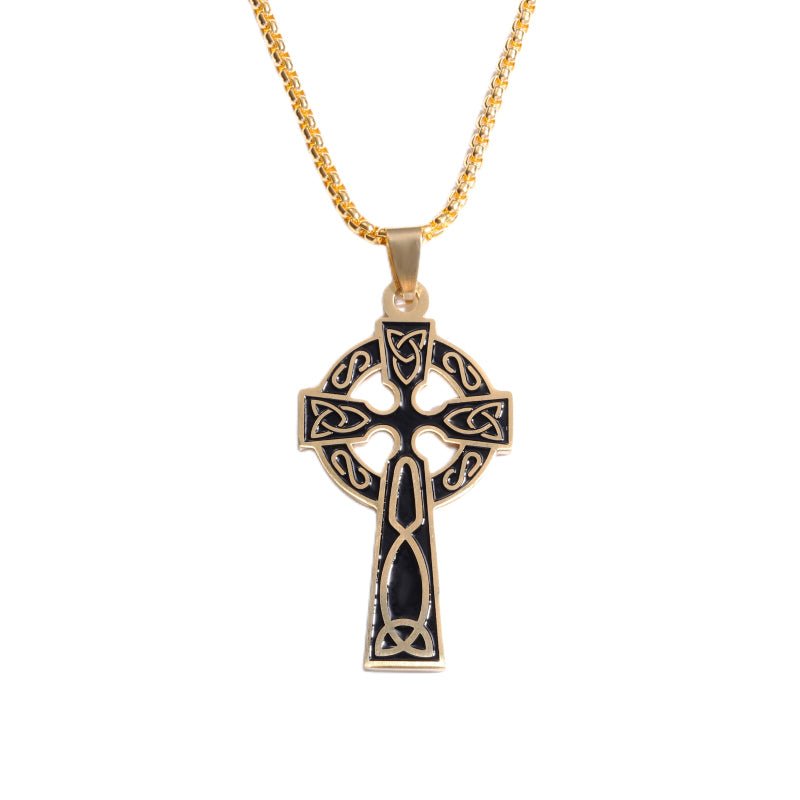
European Celtic Cross Pendant
See more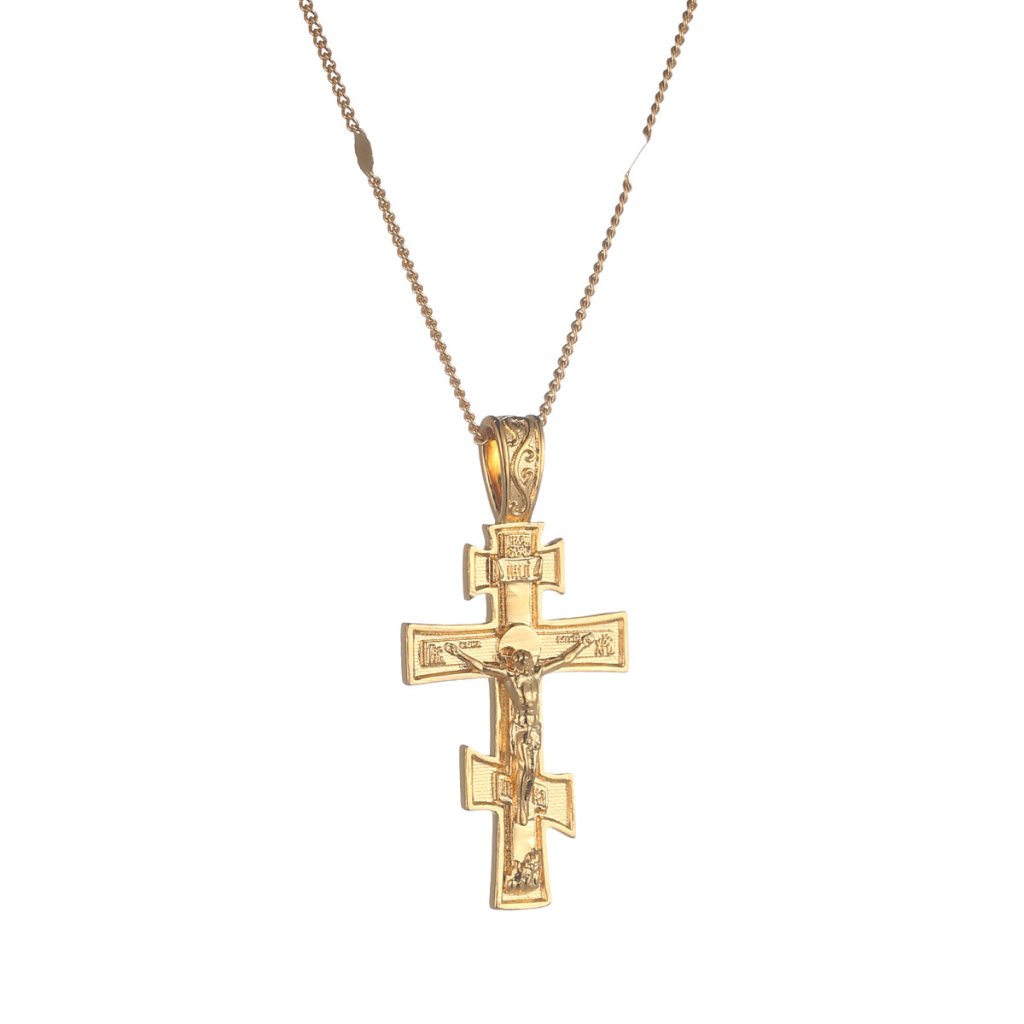
Necklace with a Russian Orthodox Cross
See more
Necklace with its Saint Nicholas Cross
See more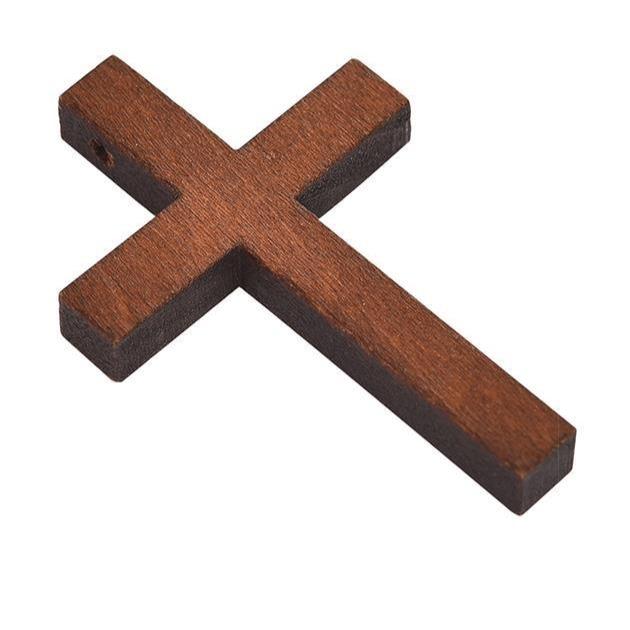
Simple Wooden Cross
See more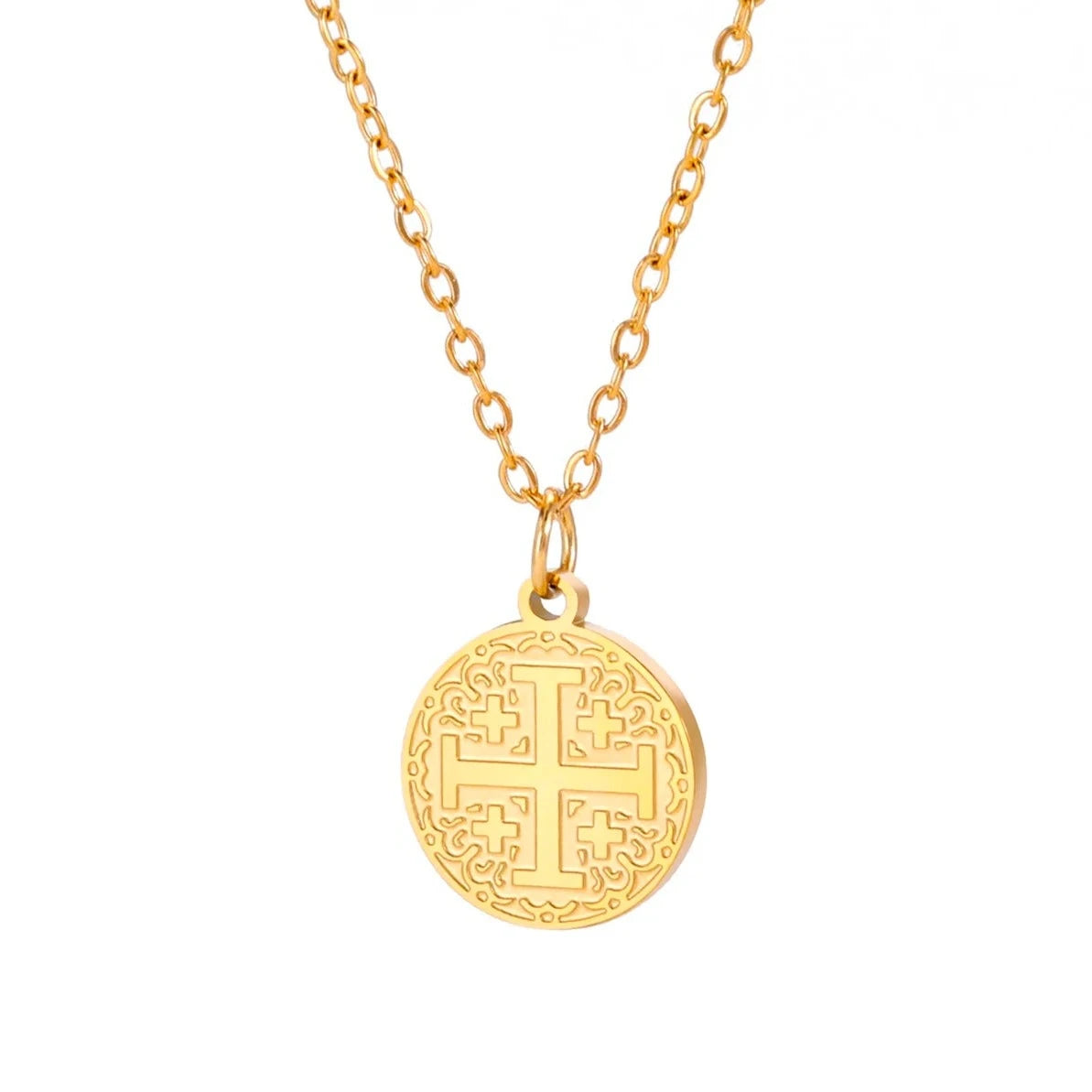
Amulet with a Jerusalem Cross
See more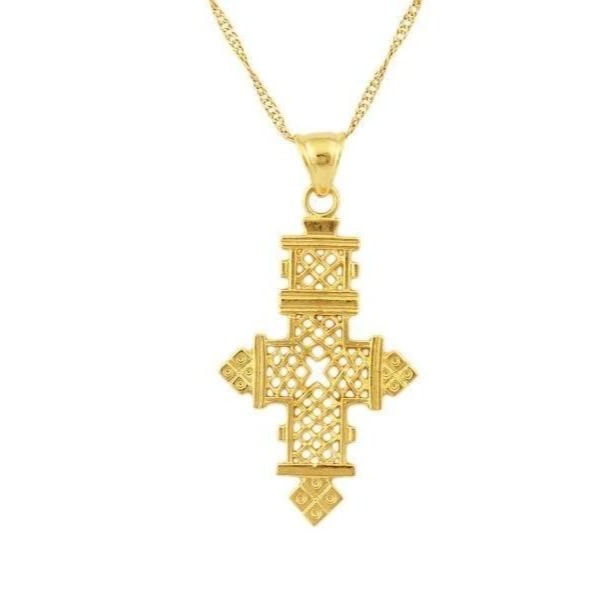
Pendant with An Ethiopian Cross
See more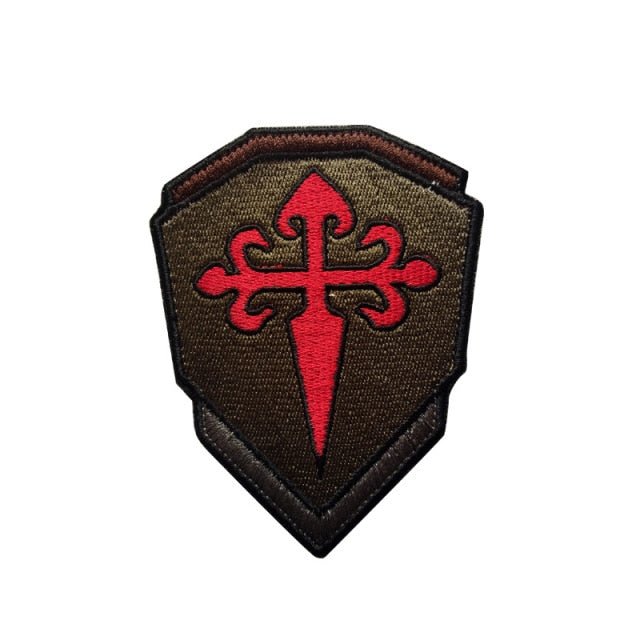
Crest of the Order of Santiago
See more
